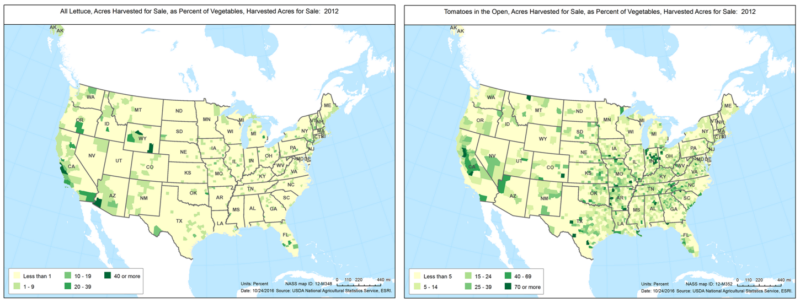Part 2 of a 2 part series on farming going where it’s never gone before. Click here to read part one.
A hunger to help isn’t enough to put food on the plates of those who are starving. It takes action. Without it, 800 million people will continue to go hungry worldwide.
Food shortage is a major global issue, and there isn’t an easy answer to the problem. There are a number of factors that contribute to world hunger including a lack of agricultural infrastructure and things like war, but drought is one of the most common causes of food shortages in the world. Climate change is only making this issue more prevalent around the world. Greenhouses like the ones scientists have been working on for lunar farming, as we talked about in part one, could one day solve this major issue. Luckily, companies are already working toward that future.
Brightfarms, an agriculture tech startup, is raising money to bring high-tech greenhouses, and the food they produce, to a city near you. Right now, the company’s goal is to provide fresh produce to parts of the country where vegetables aren’t often grown. That means greens are loaded up on trucks and shipped around the country damaging their quality and often increasing their costs.
Even though the midwest is covered with farmland, core produce like lettuce and tomatoes grow only in specific parts of the country. Below are a couple of maps from the USDA that show where the two are most often grown in here in the US.

As you can see there are large parts of the country that require long distance shipping for access to both lettuce and tomatoes. That means these greenhouses can grow both on a local basis for cities across the country that lack immediate access. That potentially means more food is available for those who need it and a higher quality of produce will be available to those who most often lack opportunity to purchase it.
According to Fortune, this is a real problem in America. The USDA states that 29 million Americans currently live in what are called urban and rural food deserts. By definition, a food desert means that Americans in low-income rural areas have to travel ten miles to get to their nearest supermarket and those living in urban neighborhoods are required to travel a mile or more. Fortune provided a detailed example of why this is an issue in their article.
“Oneikah Delgado walks two hours to buy her family food. The 40-year-old mother of six lives in the Bronx’s Baychester neighborhood. Delgado makes her monthly visit to Part of the Solution (POTS) in the Bronx, where they have a food pantry for people to supplement their household supplies with canned vegetables, fresh produce, eggs, beans, and grains. About 80 people visit the pantry each day, which happens to be a few blocks away from a supermarket.”
The real problem is that the food desert definition doesn’t do a good enough job of diagnosing the problem. Delgado’s situation doesn’t technically categorize her as living in a food desert. Many areas like hers include access to things like bodegas or medium-sized grocery stores but many are too high priced for low income families. That means many stores aren’t options for large percentages of the population.
This is starting to become a national issue thanks to Michelle Obama’s “Let’s Move” campaign. One of the key goals is to eliminate food deserts in these areas. That only answers part of the problem, because access doesn’t necessarily equate to adoption. The steady ascent of produce costs means that low income families will still have a hard time changing their diets even with access. In the future local growers could help offset some of the increased costs, thus making produce a legitimate option for all Americans.
What all started as one's imagination could all one day be a reality. Without a dream there’s no destination and with no destination there’s no reality. It’s about creating action. It’s about producing a hunger to learn and to grow. There’d be little fulfillment in life without that.
